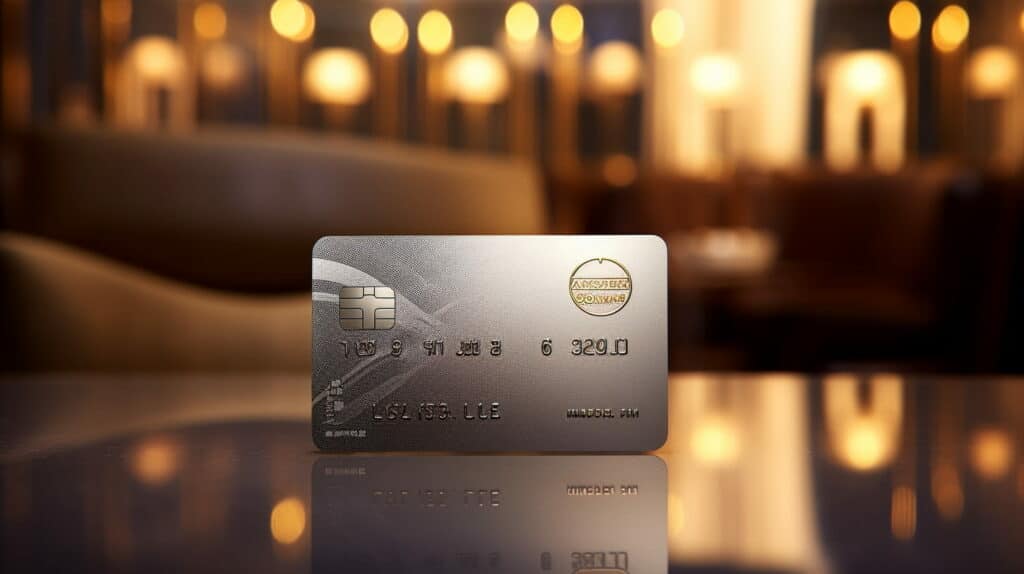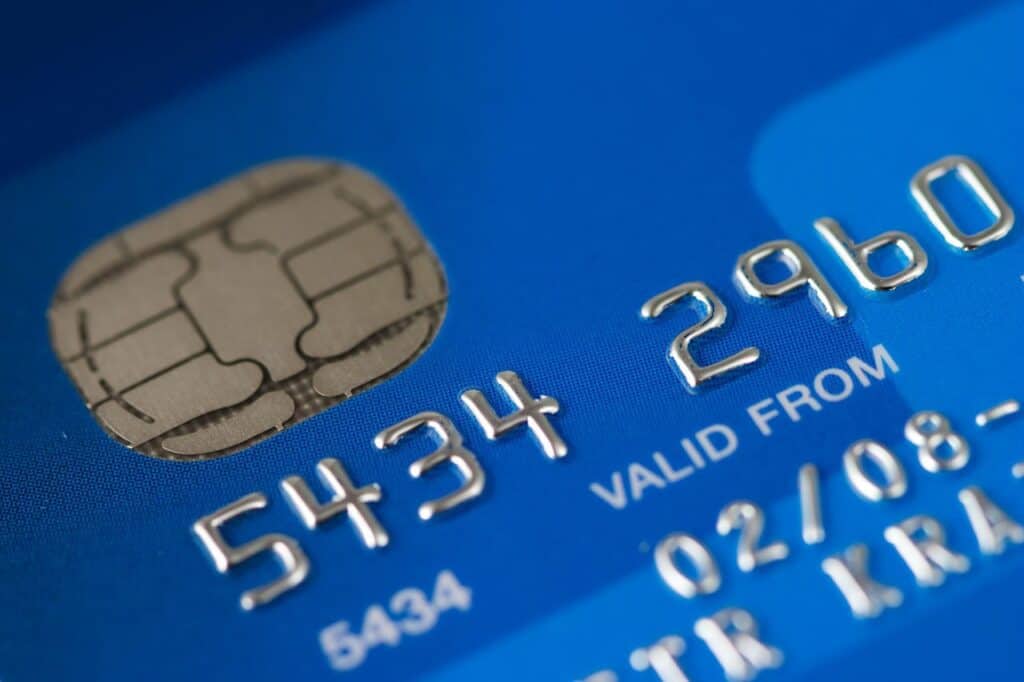Understand the Difference: Card-Present vs Card-Not-Present
Card-present and card-not-present transactions are two key terms in payment processing that every business owner should be familiar with. These transactions have different implications, benefits, and risks, which can significantly impact a business’s financial operations. It is essential to understand their differences and choose the right payment processing options based on the nature of your business and its target audience.
Key Takeaways:
- Card-present transactions involve the physical presence of the customer’s card and an employee, providing enhanced security and lower processing fees.
- Examples of card-present transactions include swiping cards at countertop machines or using mobile devices with NFC capabilities for in-store payments.
- Card-not-present transactions occur when the card is not physically present, such as online purchases or payments made over the phone.
- Card-not-present transactions are less secure, have higher processing fees, and are more susceptible to fraud.
- Choosing the right payment processing solutions, including secure payment gateways and fraud prevention tools, is crucial for mitigating risks and ensuring compliance with industry standards.
Stay informed to make informed business decisions and protect your business from potential risks and maximize the benefits of payment processing.
What are Card-Present Transactions?
Card-present transactions refer to situations where the customer’s payment card and an employee are physically present during the transaction. These transactions typically occur during in-person transactions, such as swiping a card at a countertop machine or using a mobile device with NFC capabilities. The presence of both the card and the employee ensures a more secure payment processing experience.
One of the key advantages of card-present transactions is the enhanced security they offer. With the customer’s card physically present, there is a lower risk of unauthorized use or fraudulent activity. This level of security provides peace of mind for both the customer and the merchant.
In addition to security, card-present transactions also come with lower fees compared to card-not-present transactions. The reduced processing fees make these transactions more cost-effective for businesses, allowing them to maximize their revenue.
| Benefits of Card-Present Transactions |
|---|
| Enhanced security: Physical presence of the card minimizes the risk of fraud. |
| Lower fees: Reduced processing fees result in cost savings for businesses. |
Overall, card-present transactions offer secure payment processing and lower fees, making them an ideal choice for in-person transactions. Merchants should consider implementing the necessary hardware and software to enable card-present transactions, ensuring a seamless and secure payment experience for their customers.
Examples of Card-Present Transactions
There are various ways in which card-present transactions can take place, including swiping cards at countertop machines and utilizing mobile devices with NFC capabilities. These transactions are commonly used for in-store payments, offering convenience and ease for both customers and businesses.
Countertop machines, often found at cash registers or checkout counters, are a popular method for accepting card-present transactions. Customers simply swipe their cards through the machine, and the payment is processed securely and efficiently. This method is widely adopted by retail stores, restaurants, and other brick-and-mortar businesses.
With the advancement of technology, mobile devices have also become a valuable tool for card-present transactions. Some businesses use mobile point-of-sale systems that allow employees to process payments using their smartphones or tablets. These devices are equipped with NFC capabilities, enabling customers to tap their cards or mobile wallets for quick and contactless payments.
| Advantages | Disadvantages |
|---|---|
| Secure payment processing | Can only be conducted in person |
| Lower processing fees | Limited to businesses with physical presence |
| Fraud prevention measures | Not suitable for online transactions |
In-store payments through card-present transactions offer businesses several advantages. Firstly, the secure payment processing ensures that sensitive card data remains protected. Secondly, these transactions come with lower processing fees compared to their card-not-present counterparts, making them a cost-effective option for businesses. Lastly, card-present transactions are supported by effective fraud prevention measures, reducing the risk of fraudulent activities.
Understanding the examples and benefits of card-present transactions is crucial for businesses that primarily operate in physical locations. By utilizing secure payment processing methods, merchants can offer their customers a seamless and safe payment experience while enjoying the advantages of lower fees and enhanced fraud prevention.
Benefits of Card-Present Transactions
Card-present transactions offer several advantages, including enhanced security, lower processing fees, and effective fraud prevention measures. When a customer’s card is physically present during a transaction, it significantly reduces the risk of fraudulent activity. With the card in hand, merchants can verify its authenticity by checking for physical signs of tampering or examining identification documents. This added layer of security helps protect both the business and the customer from potential breaches or unauthorized transactions.
Additionally, card-present transactions often come with lower processing fees compared to card-not-present transactions. Because these transactions are conducted in person, they are considered less risky by payment processors. As a result, businesses can enjoy cost savings as they process payments through their chosen payment service provider.
To further safeguard against fraudulent attempts, card-present transactions often require payment authentication methods, such as the customer’s signature or the use of a PIN code. These authentication measures add an extra level of certainty, ensuring that the person making the transaction is authorized to do so. This helps reduce the likelihood of chargebacks and disputes, which can be time-consuming and costly for businesses. By implementing these measures, businesses can strengthen their payment processing practices and enhance customer trust.
| Benefits of Card-Present Transactions |
|---|
| Enhanced Security |
| Lower Processing Fees |
| Effective Fraud Prevention Measures |
What are Card-Not-Present Transactions?
Card-not-present transactions occur when the customer’s payment card is not physically present during the transaction, typically in the case of online purchases. In these transactions, the card information is manually entered or provided electronically, without the need for physical swiping or inserting the card. While this offers convenience and accessibility for customers, it also introduces certain challenges and risks for businesses.
One of the primary concerns with card-not-present transactions is the higher fees associated with them. Due to the increased risk of fraud, payment processors often charge higher rates for these transactions compared to card-present transactions. These fees can add up and impact the profitability of businesses, especially those heavily reliant on online transactions.
Another significant drawback of card-not-present transactions is the increased susceptibility to fraud. Without the physical presence of the payment card, it becomes easier for malicious individuals to conduct fraudulent transactions using stolen card information. This poses a constant threat to businesses and requires them to implement robust fraud prevention measures to protect themselves and their customers.
| Challenges of Card-Not-Present Transactions | Solutions |
|---|---|
| Higher processing fees | Exploring alternative payment processing options, negotiating rates with payment processors |
| Increased risk of fraud | Implementing advanced fraud prevention tools, utilizing secure payment gateways, complying with industry standards for data security |
Despite these challenges, card-not-present transactions remain an essential part of modern commerce, enabling businesses to reach a broader customer base and conduct transactions remotely. It is crucial for businesses to carefully consider the implications of card-not-present transactions and take proactive steps to minimize the associated risks through suitable payment processing solutions and robust security measures.
Examples of Card-Not-Present Transactions
Card-not-present transactions encompass a wide range of scenarios, such as online purchases and payments made over the phone. These transactions provide convenience and accessibility for both consumers and businesses, allowing transactions to occur without the need for physical cards. Online purchases, in particular, have become increasingly popular, with consumers enjoying the ability to shop from the comfort of their own homes.
One common example of a card-not-present transaction is when customers make online purchases. Whether it’s ordering clothing, electronics, or even groceries, consumers can simply input their card details into a secure payment gateway and complete the purchase. These transactions are typically processed through e-commerce platforms, which provide a seamless and user-friendly shopping experience.
Another example of a card-not-present transaction is phone payments. Some businesses offer customers the option to place orders or make payments over the phone. In these instances, customers provide their card details verbally, and businesses process the payments manually. Phone payments are particularly common in industries such as travel and hospitality, where customers may need to make reservations or bookings over the phone.
| Examples of Card-Not-Present Transactions | Description |
|---|---|
| Online purchases | Customers input card details into secure payment gateways to complete purchases on e-commerce platforms. |
| Phone payments | Customers provide card details over the phone, and businesses manually process the payments. |
| E-commerce payments | Transactions that occur on online marketplaces, where customers make purchases from various sellers. |
Card-not-present transactions, such as online purchases and phone payments, offer convenience and accessibility for consumers. These transactions eliminate the need for physical cards and allow for seamless transactions in various industries. However, it’s important to note that card-not-present transactions can also carry higher fees and increased susceptibility to fraud. Businesses must understand these risks and implement robust security measures to protect both their customers and their own interests.

Risks of Card-Not-Present Transactions
Card-not-present transactions carry certain risks, such as lower security levels, higher processing fees, and increased vulnerability to fraud. With the absence of physical cards and in-person verification, these transactions are inherently less secure compared to card-present transactions. This makes them more susceptible to unauthorized access, data breaches, and identity theft. Merchants need to implement robust security measures, such as encryption and tokenization, to mitigate these risks and protect both their customers’ sensitive information and their own reputation.
In addition to security concerns, card-not-present transactions often come with higher processing fees. Payment processors charge more for these transactions due to the increased risk associated with them. Whether it’s online payments or phone payments, businesses have to factor in these higher costs when planning their budget and pricing strategies. It’s important to consider these fees in the overall financial analysis of accepting card-not-present transactions, as they can significantly impact profit margins.
Fraud is another major risk that merchants face with card-not-present transactions. Due to the lack of physical presence and verification, fraudsters find it easier to exploit vulnerabilities and carry out fraudulent activities such as unauthorized purchases and stolen card information. Businesses need to be vigilant and implement reliable fraud prevention tools and systems to minimize the risk of fraud. This includes integrating advanced fraud detection algorithms, implementing stepped-up customer authentication protocols, and regularly monitoring transactions for any suspicious activities.
| Risks of Card-Not-Present Transactions | Less Secure | Higher Fees | Fraud Susceptibility |
|---|---|---|---|
| Explanation | Card-not-present transactions are less secure compared to card-present transactions, making them more vulnerable to unauthorized access, data breaches, and identity theft. | Payment processors charge higher fees for card-not-present transactions due to the increased risk associated with them, impacting businesses’ financial analysis. | The absence of physical verification in card-not-present transactions makes them more susceptible to fraud, requiring businesses to implement reliable fraud prevention tools and systems. |
Implications for Your Business
Understanding the differences between card-present and card-not-present transactions has significant implications for your business’ payment processing strategy. Choosing the right payment processing options can directly impact your company’s security, cost-efficiency, and customer experience. It is crucial to evaluate your business needs and target audience to make an informed decision that aligns with your objectives.
For businesses that primarily conduct in-person transactions, card-present solutions offer enhanced security with the customer’s physical presence and secure payment processing methods. These transactions, such as swiping cards at countertop machines or utilizing mobile devices with NFC capabilities, provide a seamless and convenient experience for customers. Additionally, card-present transactions usually come with lower fees, making them a cost-effective option for businesses.
On the other hand, for businesses that heavily rely on online transactions, card-not-present solutions are essential. Although these transactions lack physical card presence, they provide accessibility and convenience for customers, allowing online purchases and phone payments. However, it is important to note that card-not-present transactions have a higher risk of fraud and typically incur higher processing fees due to the increased vulnerability.
| Payment Processing Options | Key Considerations |
|---|---|
| Card-Present Transactions |
|
| Card-Not-Present Transactions |
|
To choose wisely, consider your business model, customer preferences, and the level of security required. Implementing a secure payment gateway and utilizing fraud prevention tools are crucial for both types of transactions. Compliance with industry standards ensures that your payment processing solution meets the necessary regulations and safeguards customer data.
Understanding the differences between card-present and card-not-present transactions is vital for your business’ payment processing strategy. Card-present transactions offer enhanced security, lower fees, and effective fraud prevention measures, making them ideal for in-person transactions. On the other hand, card-not-present transactions provide convenience and accessibility for online transactions, but they come with a higher risk of fraud and higher processing fees. Evaluating your business needs and target audience will help you make an informed decision and implement the right payment processing options for your business.
Finding the Right Payment Processing Solutions
To ensure smooth and secure payment processing, it is crucial to find the right payment processing solutions that incorporate a secure payment gateway, fraud prevention tools, and compliance with industry standards. These factors are essential for protecting your customers’ sensitive payment information, minimizing the risk of fraud, and maintaining the integrity of your business.
When choosing a payment processing solution, one of the key considerations is a secure payment gateway. This technology acts as a bridge between your business and the payment networks, encrypting and securely transmitting transaction data. Look for a payment gateway that utilizes industry-standard encryption protocols and offers advanced security features such as tokenization or point-to-point encryption to safeguard your customers’ card information.
In addition to a secure payment gateway, it is important to select a provider that offers robust fraud prevention tools. These tools can help identify and prevent fraudulent transactions before they occur, protecting both your business and your customers. Look for features like real-time transaction monitoring, address verification services, and device authentication, which can help detect and flag suspicious activity.
Finally, ensure that the payment processing solutions you choose are compliant with industry standards, such as the Payment Card Industry Data Security Standard (PCI DSS). Compliance with these standards is not only critical for maintaining the trust of your customers but also helps protect your business from potential penalties and legal liabilities. Partnering with a payment service provider that prioritizes compliance and regularly undergoes security audits can provide you with peace of mind.
| Key Considerations for Payment Processing Solutions |
|---|
| Secure payment gateway |
| Fraud prevention tools |
| Compliance with industry standards |
Conclusion
Understanding the distinctions between card-present and card-not-present transactions is essential for secure in-person payments and online transactions, enabling businesses to make informed decisions regarding their payment processing strategies. Card-present transactions involve the physical presence of the customer’s card and an employee, ensuring a higher level of security. Examples of card-present transactions include swiping cards at countertop machines or using mobile devices with NFC capabilities.
These transactions not only provide convenience and ease for in-store payments but also offer lower processing fees, making them a cost-effective choice for businesses. On the other hand, card-not-present transactions occur when the card is not physically present, such as online purchases or payments made over the phone. While these transactions offer convenience and accessibility, they come with higher fees and are more susceptible to fraud.
It is crucial for merchants to carefully consider the implications of each transaction type and select the appropriate payment processing solutions for their business. By partnering with reliable payment service providers and implementing robust security measures, businesses can mitigate the risks associated with card-not-present transactions and ensure the safety of their customers’ payment information.
In the ever-evolving world of digital payments, making informed decisions about card-present and card-not-present transactions will ultimately safeguard businesses and their customers, providing secure payment options for both in-person and online transactions. By choosing the right payment processing strategies, businesses can not only protect themselves from potential fraud but also optimize their operations and build trust with their customers.
FAQ
What are card-present transactions?
Card-present transactions are transactions where the customer’s card and an employee are physically present. Examples include swiping cards at a countertop machine or using a mobile device with NFC capabilities.
What are some examples of card-present transactions?
Examples of card-present transactions include swiping cards at countertop machines and using mobile devices with NFC capabilities for in-store payments.
What are the benefits of card-present transactions?
Card-present transactions offer enhanced security, lower processing fees, and effective fraud prevention measures. They also require payment authentication, making them more secure.
What are card-not-present transactions?
Card-not-present transactions occur when the card is not physically present, such as online purchases or payments made over the phone.
What are some examples of card-not-present transactions?
Examples of card-not-present transactions include online purchases and payments made over the phone for e-commerce transactions.
What are the risks of card-not-present transactions?
Card-not-present transactions are less secure, have higher processing fees, and are more prone to fraud compared to card-present transactions.
What are the implications of card-present and card-not-present transactions for businesses?
Understanding the differences between card-present and card-not-present transactions is important for businesses to choose the right payment processing options based on their nature and target audience.
How can businesses find the right payment processing solutions?
Businesses should look for secure payment gateways, fraud prevention tools, and compliance with industry standards when choosing payment processing solutions. Partnering with reliable payment service providers is also crucial.





